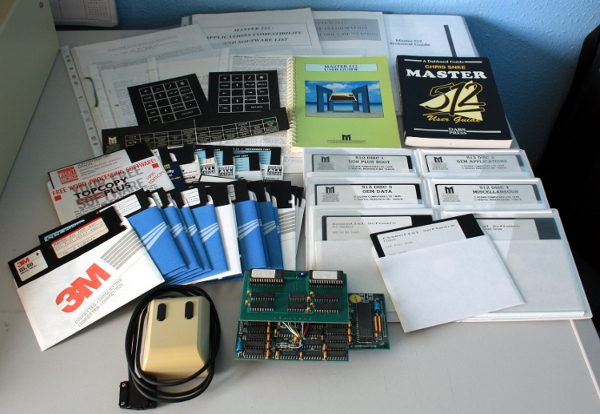
This is my 1Mb Acorn 80186 ( Master 512 ) Co-Processor package that I sold
some time ago. The Acorn 80186 board came with 512K of onboard RAM, but I
had mine upgraded to 1Mb by a company called Essential Software.
Pictured here are all the software disc's, Manuals, Mouse and a load of
extra documentation / Specifications / Acorn Technical Documents.
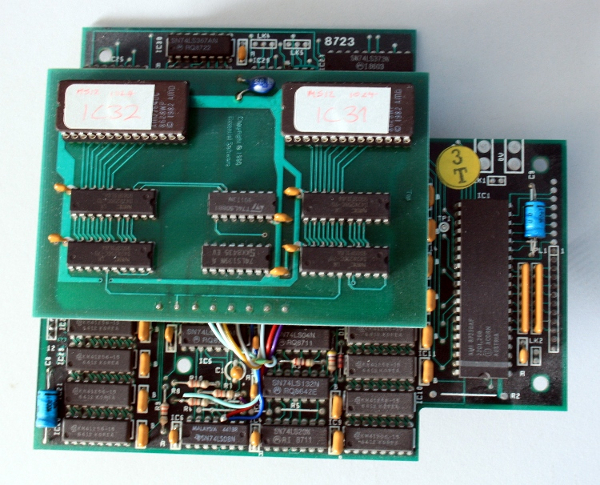
Here is a top-down view of the processor card. The mezzanine board on top
holds the extra RAM chips, the two ROMS from the board have been moved up
and re-flashed? I cannot remember. You cannot see the CPU in this view as
it is buried under the top board. Some very fine wiring and soldering
was required to do this modification and it was well worth it.
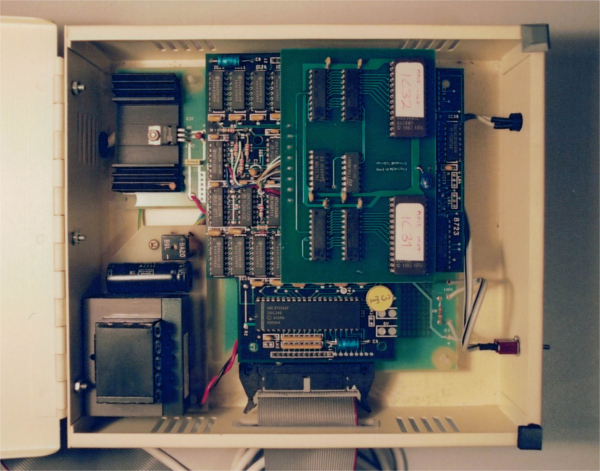
This is a view of the 80186 inside my Watford Electronics Co-Pro Adaptor.
I had it mounted in this because my BBC Master 128 already had an internal
65C102 'Turbo' Co-Processor fitted internally, so this was hooked-up to the
Tube port and the Master switched to 'External Tube' Configuration to use.
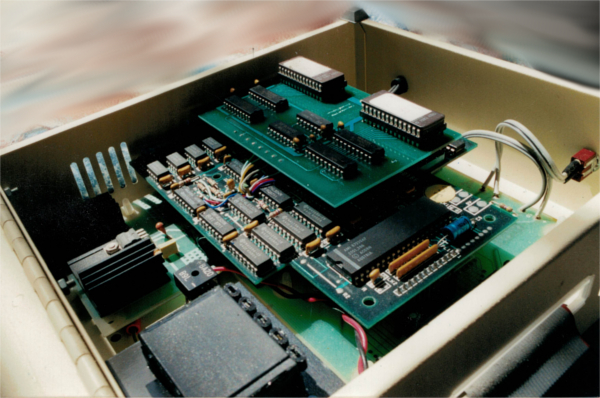
A low down view of the 80186 inside my Co-Pro Adaptor.
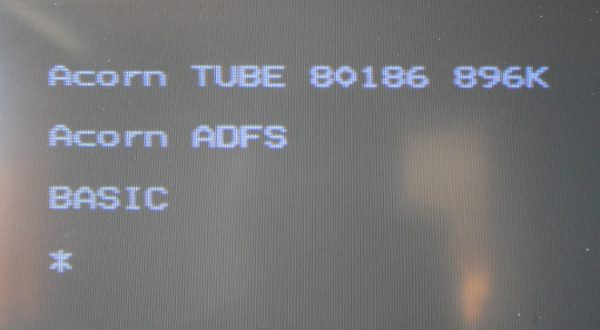
This is the Startup screen on my Master 128 with the 80186 active.
Even though it was upgraded to 1MB RAM, you never got the full 1MB
as usable RAM, so you had 896K, well it was better that the original.
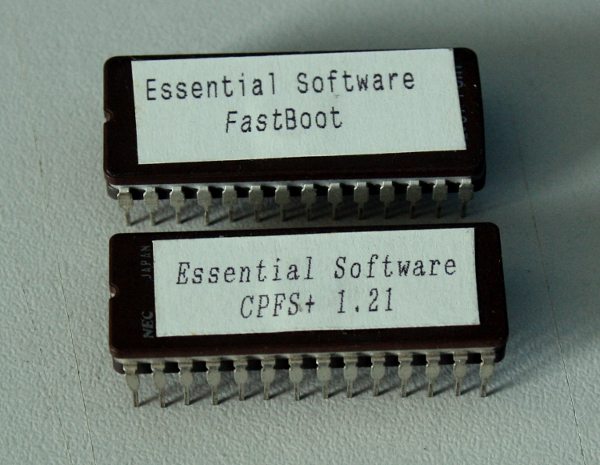
These are two ROM's that I also purchased from Essential Software.
The 'FastBoot' was a special boot ROM that had a lot of the Floppy Disc
bootup information on it, and employed a modified Boot Floppy as well.
If I remember correctly it halved the boot time from switch on to 'A' prompt.
The CPFS+ ROM is the Co Processor Filing System. This allowed you to use
the memory of the Co-Processor as a RAM DISC whilst using the BBC Master
in its native BBC BASIC mode. I used this feature whilst using Wapping Editor
a Desk-Top Publishing application from Watford Electronics.
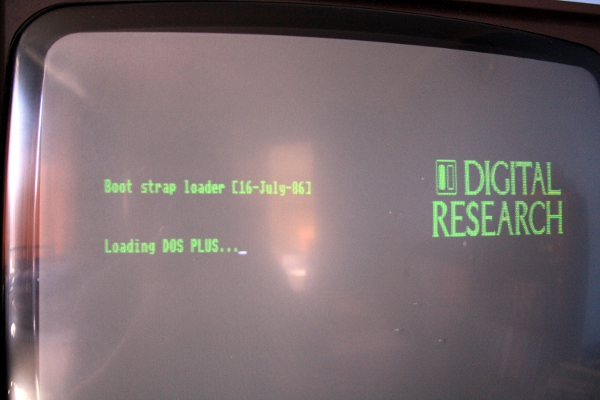
This is the 80186 booting up into DOS PLUS.

And here we are at the 'A' Prompt. Remember it is not a 'C' prompt as on a
PC Clone of the era as we are booting from a floppy disc drive.
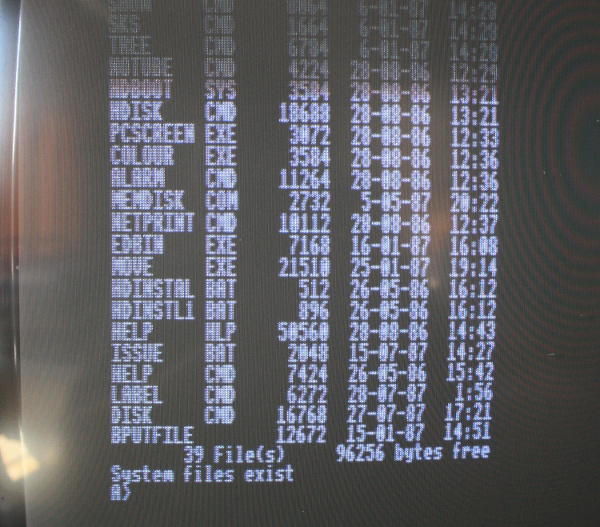
The screen after issuing a 'DIR' command from the prompt.
This will just list the directory of the Boot Disc.

Here we have the Directory listing of the GEM suite applications disc.
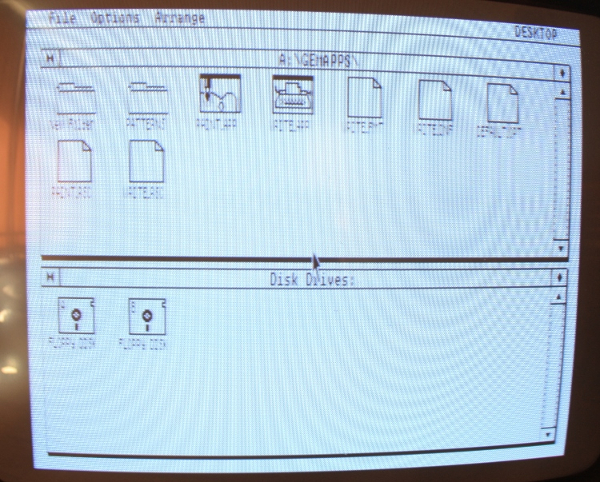
And here we have booted into the GEM desktop in marvelous two colour mode.

A sample image that comes with GEM PAINT is loaded on this screen.

This image shows the Co-Processor Filing System in action.
Issuing a *. command to catalogue the empty RAM Disc tells us that we have
761856 bytes of storage free, so around 744K of storage, also as noted
in the screenshot it provided a 256K Printer Buffer as standard.

This is after issuing a *ROMS command on the BBC, it shows the CPFS+ ROM
and 512 FastBoot in rom slots 0 and 1 ( I had then in a ROM Cartridge ).

A screenshot after issuing a *HELP CPFS command.
It shows all of the commands / functions available.
The Acorn 80186 was a bold attampt at achieving a 'PC' compatibility on the
8 bit BBC range of machines. It held its own initially with some of the more
basic DOS based applications, but was severly crippled I believe by trying to
cross two platforms and produce an efficient product. I must say that Acorn did
a fine job with the design and implementation of the 80186 Co-Processor as they
did with all other vairiants i.e. Z80, 6809 etc They were pushing the 8bit range
to the full and well done to everyone involved. The PC Cards in the later RISC
machines were a little better, more so than the PC-Emulator software available.
However their efforts in pure RISC OS were more impressive and more needed.
If you have arrived here from a Search Engine
Click the link below to go to the Classic Acorn Home Page
Everyone else use the Navigation Section on the Left
<---------------------------------------------------
|
|